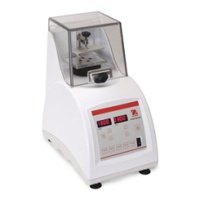EMF Meters; How to read specifications
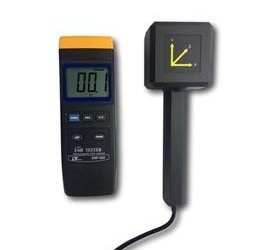
If you're hunting for the right meter to monitor EMF in your environment, you'll soon discover there is a very wide range of EMF meters on the market, and each product has different and often quite technical specifications. Evaluating each product can be time-consuming, which is why an independent, online scientific instrument company that's backed by a team of scientists can help! Instrument Choice has put together a list of the essential terms and definitions you are bound to find in EMF meter specifications.
Here's the list:
Electromagnetic Spectrum
Electromagnetic Spectrum refers to wavelengths or frequencies over which electromagnetic radiation extends. The spectrum includes radio waves, microwave, infrared, visible light, ultraviolet light, X-rays, and gamma rays.
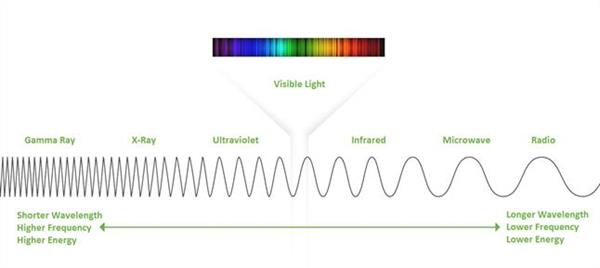
Figure 1 The electromagnetic spectrum, including wavelengths visible to the human eye.
Frequency
Frequency means the number of occurrences times a repeating event takes place in a set unit of time. When used to describe EMF, this describes the rate per second of a vibration constituting a wave in an electromagnetic field. See Figure 1 (above) as an example; Gamma rays have a higher frequency than radiofrequency waves.
Wavelength
Wavelength is the distance between consecutive crests of an electromagnetic wave. The shape and length of an electromagnetic wave will differentiate it from other forms of electromagnetic energy.
See Figure 1 (above) as an example; Gamma rays have a shorter wavelength than radio waves.
Bandwidth
Bandwidth is the range of frequencies within a given band, i.e., the frequency range between the lowest and highest attainable frequency.
Electric Field
Electric fields arise from voltage. The SI (International System of Units) unit for electric field strength is volt per meter (V/m). Electric field strength decreases with distance from the source.
Magnetic Field
A magnetic field is a vector field that describes the magnetic influence of electrical charges in relative motion and magnetised materials.In simple terms, this describes the area around a magnet or moving electric charge in which there is a magnetic force.The measurement for magnetic field strengthis amperes per meter (A/m). Commonly, EMF investigators use a related measure, flux density (in microtesla (µT) or milli-tesla (mT) instead.
Electromagnetic Fields
Typically, an Electromagnetic Field is the combination of an electric field and a magnetic field. Stationary charges produce the electric field, and the magnetic field is generated by moving charges (currents).
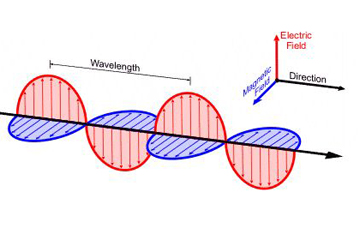
Figure 2 Electromagnetic fields form when a magnetic field (blue) coupled with an electric field (red). Magnetic and electrical fields of an electromagnetic wave are perpendicular to each other and the direction of the wave.
Single-Axis EMF Meters
Single-Axis EMF Meters measure one dimension of an electromagnetic field. (See figure 2 above). To obtain a full-field measurement, you need to tilt and turn these meters. An advantage of Single-Axis EMF Meters is that they are more affordable than Tri-Axis Meters.
Tri-Axis EMF Meters
Tri-Axis EMF Meters obtain fast EMF results as they can measure all three axes of an EMF field at one time. For this reason, Tri-Axis Meters are generally more costly than Single-Axis EMF Meters.
Flux
Flux describes any EMF effect that appears to pass or travel through a surface or substance.
Magnetic Flux Density
The definition of Magnetic flux density is the amount of magnetic flux in an area taken perpendicular to the magnetic flux's direction.
Tesla
Tesla (T) is the SI unit of magnetic flux density. Often expressed in milli-tesla (mT) and microtesla (µT).
Gauss
Gauss is a unit of magnetic induction, equal to one ten-thousandth of a Tesla. One gauss equals 1×10−4 tesla (100 μT), so 1 tesla = 10,000 gauss.
Accuracy
Accuracy is the closeness of a measurement to a specific value. Specifications will express the accuracy of a device as a range, i.e., plus or minus a set amount.
Resolution
The resolution refers to the smallest value an EMF Meter can display on its LCD screen.
Conclusion
EMF meter specifications often contain an assortment of complex terms that can make deciphering specifications difficult. For this reason, the Instrument Choice team has assembled this specification decoder with key terms and definitions to help you find the right EMF meter for your application.
Need assistance finding the perfect EMF Meter? Have questions about any of the definitions listed above? Contact one of the Instrument Choice Scientists. We're here to help!
Call 1300 737 871 or email [email protected]
Also interesting
The SI measurement unit for electrical conductivity is called Siemens(S). Typically conductivity measurements are displayed in either MilliSiemens per centimetre (mS/cm) or MicroSiemens per cm (μS/cm). It is critical to know how to convert measurements from mS/cm to uS/cm (and vice versa) to ensure you obtain an accurate determination of conductivity, and then draw an appropriate conclusion about a sample's ionic concentration.
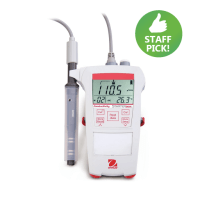
OHaus manufactures an extensive selection of outstanding precision lab equipment. This article spotlights the range of OHaus equipment you can discover in the Instrument Choice online store. To assist your browsing, we have also profiled some outstanding product examples you will found in each product category.
